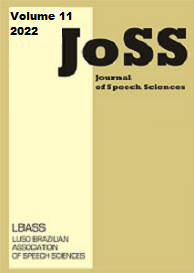Abstract
This study, in two parts, endeavors a novel analysis of existential constructions, based on a different theoretical setting of clause structure, where the predicate is taken as a necessary and sufficient constituent of the clause. Leaning on this perception, the analyses of existential constructions developed here tries to overcome the discrepancy between form and (semantic and informational) meaning in Hebrew existential constructions. Part I of the study dealt with affirmative existential-presentative constructions, used to introduce referents into the discourse. Most of the constructions were analyzed as consisting of an existential constituent, viewed as a modal marker, and a pivot, regarded as the core component of the predicate domain. This analysis was shown to be valid for both the existential marker jeʃ and for its suppletive verbal forms, derived from √hjj ‘be’. Thus, presentative-existential sentences are formed as unipartite sentences, consisting of only a predicate domain. Part II deals with other existential constructions, including negative constructions; bipartite existential sentences; existential constituents as sole constituents in a sentence; existential constituents with clitic referential markers; and the use of the existential markers as interjections or discourse markers.
References
Amir N, Silber-Varod V, Izre'el S. Characteristics of Intonation Unit Boundaries in Spontaneous Spoken Hebrew: Perception and Acoustic Correlates. In: Bel B, Marlien I (Eds.). Speech Prosody 2004, Nara, Japan, March 23-26, 2004: Proceedings, 2004, 677-680.
Apostel L. The Relation between Negation in Linguistics, Logic, and Psychology: A Provisional Conclusion. Logique et Analyse 15, 1972, 333-401.
Berto F. A Modality Called ‘Negation’. Mind 124 (495), 2015, 761-793.
Buttler CS. Structure and Function: A Guide to Three Major Structural-Functional Theories. (Studies in Language Companion Series, 63-64.) Part I: Approaches to the simplex clause. Amsterdam: Benjamins, 2003.
CoSIH: The corpus of Spoken Israeli Hebrew. cosih.com
Cuenca MJ. The Fuzzy Boundaries Between Discourse Marking and Modal Marking. In: Degand L, Cornillie, B, Pietrandrea P (Eds.), Discourse Markers and Modal Particles. Categorization and description. Amsterdam: Benjamins, 2013, 191-216.
De Haan F. The Interaction of Modality and Negation: A Typological Study. (Outstanding Dissertations in Linguistics.) London and New York: Routledge, 1997.
Dekel N. Colloquial Israeli Hebrew: A Corpus-based Survey. (Trends in Linguistics: Studies and Monographs, 279.) Berlin: De Gruyter Mouton, 2014.
Du Bois JW, Cumming S, Schuetze-Coburn S, Paolino D. Outline of Discourse Transcription. In: Edwards JA, Lampert MD (Eds.). Talking Data: Transcription and Coding in Discourse Research. Hillsdale, New Jersey: Lawrence Erlbaum Associates, 1993, 45-89.
ELAN (Version 6.2) [Computer software]. Nijmegen: Max Planck Institute for Psycholinguistics, 2021. Retrieved from: https://archive.mpi.nl/tla/elan.
Frajzyngier Z. A Functional Theory of Complementizers. In: Bybee J, Fleischman S (Eds.). Modality in grammar and discourse. (Typological studies in language, 32.) Amsterdam: Benjamins, 1995. 473-502.
Givón T. Syntax: An Introduction. I-II. Amsterdam: Benjamins, 2001.
Glinert L. The Grammar of Modern Hebrew. Cambridge: Cambridge University Press, 1989.
Goldenberg G. Attribution in Semitic Languages. Langues Orientales Anciennes: Philologie et Linguistique 5-6, 1995, 1-20. [= Goldenberg G. Studies in Semitic Linguistics: Selected Writings. Jerusalem: Magnes. 1998. 46-66.]
Gonen I. Morphophonology of the Verbal Root in Spoken Israeli Hebrew. MA thesis, Tel-Aviv University, 2009.
Halliday MAK. Halliday’s Introduction to Functional Grammar. 4th edition revised by Matthiessen CMIM. London and New York: Routledge, 2014.
Horn LR. A Natural History of Negation. (The David Hume Series: Philosophy and Cognitive Science Reissues.) Stanford, CA: CLSI Publications, 2001.
Inbar A. Subordination and Coordination? The functions of the particles še ‘that/which’ and ve ‘and’ in spontaneous Israeli Hebrew. PhD dissertation, Tel-Aviv University, 2019. [Hebrew with English summary]
Izre’el S. The Basic Unit of Spoken Language and the Interfaces Between Prosody, Discourse and Syntax: A View from Spontaneous Spoken Hebrew. In: Izre’el S, Mello H, Panunzi A, Raso T (Eds.). In Search of Basic Units of Spoken Language: A Corpus-based Approach. (Studies in Corpus Linguistics, 94.) Amsterdam: Benjamins, 2020, 77–105.
Malibert-Yatziv I. La flexion préfixale dite "futur" en hébreu contemporain. Faits de Langues 33, 2009, 177-184.
Malibert-Yatziv I. Nuances in Meanings of the Prefix and Suffix Verbal Conjugation in Spoken Israeli Hebrew. In: Gonen E (Ed.). Studies in Spoken Hebrew. (Te’uda, 27.) Tel-Aviv: Tel-Aviv University, 2016, 295-316. [Hebrew with English summary]
Mixdorff H, Amir N. The Prosody of Modern Hebrew: A Quantitative Study. In: Bel B, Marlien I (eds.) Speech Prosody 2002, Aix-en-Provence, France — 11-13 April 2002: Proceedings. Aix-en-Provence: Laboratoire Parole et Langage - UMR 6057 CNRS, 2002, 511‐514.
NMELRC. The Hebrew corpora compiled in The National Middle East Language Resource Center (NMELRC). hebrewcorpus.nmelrc.org
Praat: Doing phonetics by computer (version 6.0.40). [Computer software]. Boersma P & Weenink D. https://www.fon.hum.uva.nl/praat/
Rosén HB. Contemporary Hebrew. (Trends in Linguistics; State-of-the-Art Reports, 11.) The Hague: Mouton, 1977.
Shor L. Third Person Human Reference in Israeli Hebrew Conversation. PhD dissertation, Tel-Aviv University, 2019.
Shor L. Negation in Modern Hebrew. In: Berman RA (ed.). Usage-Based Studies in Modern Hebrew. Background, Morpho-lexicon, and Syntax. (Studies in language Companion Series, 210.) Amsterdam: Benjamins, 2020, 583-621.
Silber-Varod V, Sagi H, Amir N. The Acoustic Correlates of Lexical Stress in Israeli Hebrew. Journal of Phonetics 56, 2016, 1–14.
Sinclair, J. Review of Biber D, Johansson S, Leech G, Conrad S, Finnegan E. Longman Grammar of Spoken and Written English. Harlow: Longman, 1999. International Journal of Corpus Linguistics 6, 2001, 339-359.
Tobin Y. Asserting One's Existence in Modern Hebrew. Lingua 58, 1982, 341-368.
Tobin Y. Existential Particles and Paradigms in Modern Hebrew. Multilingua 10/1-2, 1991, 93-108.
Wierzbicka A. The semantics of Interjection. Journal of Pragmatics 18, 1992, 159-192.

This work is licensed under a Creative Commons Attribution 4.0 International License.
Copyright (c) 2022 Shlomo Izre'el


